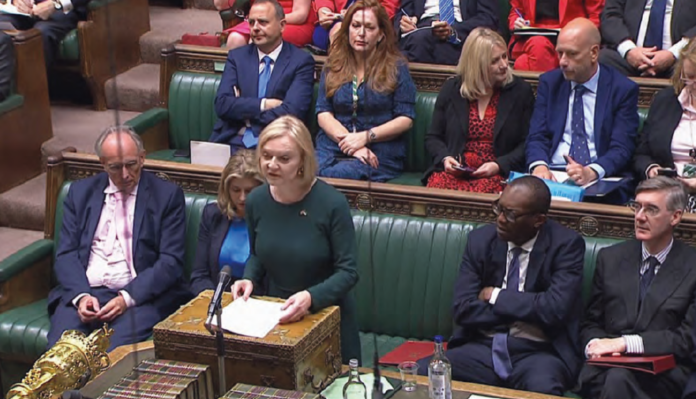February 2023
Jo Tuffill explains her four steps to success in the ACCA’s Financial Management exam
You can pretty much guarantee in every Financial Management exam there will be a question on foreign exchange risk.
Traditionally, students struggle with understanding exchange rate risk due to the nature of the translation calculation. But, thanks to ‘Trussonomics’, there has been one positive outcome for students. The recently resigned UK Prime Minister has put exchange rate risk into the news and, hence, every ACCA FM student can now become a ‘Foreign Exchange Guru’ by following my four basic steps.
Please note that the steps below relate to the ACCA FM exam; other financial management syllabi may differ in the way they quote exchange rates and examine foreign exchange risk.
STEP 1: Quoted Rates
The TERM is quoted first with the BASE quoted second.
All exchange rates are quoted as a ratio, being a quantity of the term currency to 1 unit of the base currency. If you are a UK company using the rates quoted below, the £ is the base currency and foreign currencies will be the term currency.
| Euro €/£ rate | €1.19 to £1 |
| US $/£ rate | $1.22 to £1 |
STEP 2: Conversion
DIVIDE to convert from the TERM to the BASE currency.
For example, €1,000 at an exchange rate of €1.19 to £1 gives €1,000 ÷ 1.19 = £840.34.
STEP 3: Emoji 🙂 or 🙁 to decide which rate
Banks make money on a spread. They offer you a different rate depending on whether you are buying or selling the BASE currency.
A spread quoted as €/£ 1.18 – 1.19 shows a low rate (1.18) and a high rate (1.19).
- If you want to pay a supplier in Euros, and are quoted a EUR to £1 rate,
the bank will sell the base (Euros) at the low rate: €1,000 ÷ 1.18 =
£847.46. - If you want to convert a Euro receipt from a customer, the bank will buy
the base (Euros) at the high rate: €1,000 ÷ 1.19 = £840.34. - So the bank makes a profit on the spread of £7.12 by selling at £847.46
and buying at £840.34.
For exam questions, use emoji’s:
Receiving € (term) -> feeling HIGH -> Choose HIGH rate
Paying € (term) -> feeling LOW -> Choose LOW rate
STEP 4: Trussonomics or for a UK company
Consider a UK company, ‘BORIS BOBS’, that imports raw materials for wigs
from a US supplier and then exports the wigs to a distributor in Europe.
In Aug ’22, BORIS BOBS purchases materials from its US supplier worth $100,000 when the rate is $1.22 to £1, on 45 days’ credit. They expect to pay $100,000 ÷ 1.22 = £81,967 for the goods in October.
However, Ms Truss announces her Autumn Budget and the $/£ rate falls to $1.11. The £ is now worth fewer Dollars – it has ‘devalued’. BORIS BOBS now has to pay at the new rate and pays $100,000 ÷ 1.11 = £90,090.
Oh dear, poor BORIS BOBS sustains a loss of £8,123 due to transaction risk.
An IMPORTER will LOSE when the currency DEVALUES.
However, also in Aug ’22, BORIS BOBS sold wigs worth €200,000 when the rate was €1.19 on 45 days credit. BORIS BOBS expects to receive €200,000 ÷ 1.19 = £168,067 in October.
After the Ms Truss announcement the €/£ rate fell to €1.14. When the European distributor paid BORIS BOBS they converted at the lower rate and received €200,000 ÷ 1.14 = £175,439.
Happy days for BORIS BOBS, a gain of £7,372!
An EXPORTER will WIN when the currency DEVALUES.
Remember my four steps to success in the FM exam:
- Quoted at Term to Base.
- Convert the Term currency to the Base currency by dividing.
- Receipt in Term high rate and Payment in Term low rate.
- Devaluation – importers lose and exporters win, and vice versa when there is an appreciation.
Now you are a ‘Foreign Exchange Guru’.
• Jo Tuffill is an expert FM for tutor for the ACCA and part of the team at FME Learn Online




